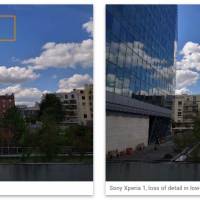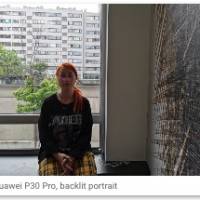
The Sony Xperia 1 was leaked before its MWC 2019 launch, getting us excited for a new flagship phone from Sony. It officially launched with a topnotch 21:9 CinemaWide 4K HDR OLED display and the promise of better cameras. It was only back in June when the Android phone went for pre-order in the US. The phone also hit Amazon a couple of weeks ago with built-in Alexa. As with most Sony flagships, we have high hopes about this one because the brand has always been known for its cameras.
DxOmark has finally gotten to reviewing the Sony Xperia 1 camera extensively. To review the specs, the phone comes with 6GB of RAM, Qualcomm Snapdragon 855 processor, and 128GB onboard storage. The triple rear camera system includes a 12MP primary camera with f/1.6 aperture and OIS, 12MP Ultra-wide lens with f/2.4 aperture, and another 12MP telephone sensor (also with f/2.4 aperture and OIS, LED flash, and PDAF). The phone can record at 2160p (4K)/30fps video but default is 1080p at 30fps.
The Mobile Score is only 91. It’s not even in the Top 10 so it’s a bit disappointing. It has the same score as the Smartisan Pro 2S and Xiaomi Pocophone F1. Selfie Score is 78, making it 11th on the Selfie DxoMark list.
The camera specs are impressive but the software doesn’t perform well. We always say the two go together. It doesn’t matter if you have the highest megapixels or the latest mobile processor if the software isn’t powerful enough.
Sony Xperia 1 offers good low-light color rendering and good target exposure in low light. In most tested scenes, autofocus is accurate and fast. The DxOMark team has identified some issues. When using flash, the red-eye effect is strongly visible. There is a strong loss of sharpness at the edges of the frame. Some outdoor and indoor scenes are underexposed while HDR fails to trigger sometimes. There are some noticeable texture-rendering irregularities as well.
When it comes to video recording, you can enjoy the smooth exposure adaptation, efficient stabilization, and accurate white balance in most conditions. Unfortunately, some details are lost in most tested scenes. There is also that noticeable ringing and judder effect. Dynamic range is limited. There’s also some frequent unnecessary refocusing.


















